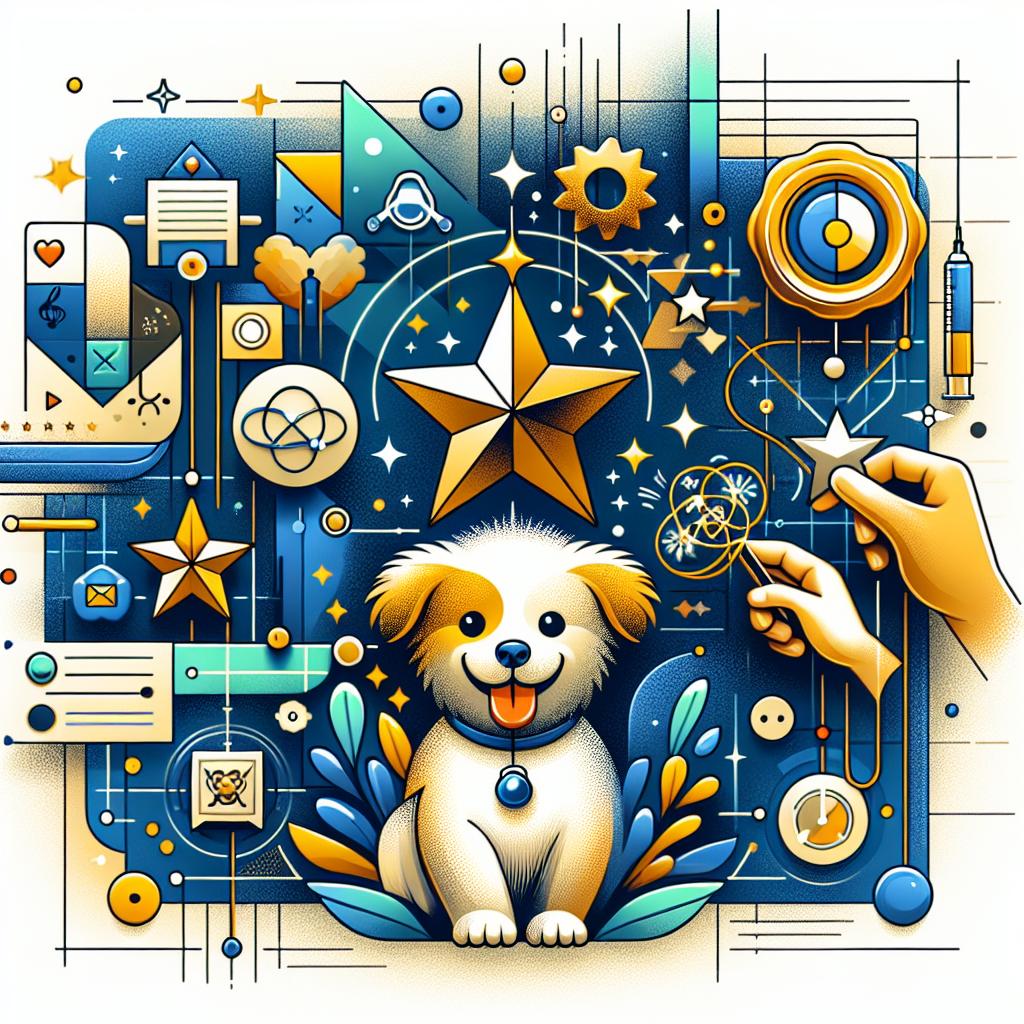Welcoming a puppy into your home is like opening a door to boundless joy, laughter, and the occasional chaos. These furry bundles of energy come equipped with a unique charm, but they also bring the delightful challenge of training. Understanding the basics of puppy training is crucial for nurturing good behavior from the very start. Just as we instill values in children, laying a solid foundation for your puppy will set the stage for a harmonious relationship. In this article, we will explore essential training techniques, practical tips, and the importance of patience, helping you turn those playful antics into well-mannered companionship. Let’s embark on this rewarding journey together, ensuring your puppy grows into the perfectly behaved pooch you’ve always dreamed of.
Understanding Canine Psychology for Effective Training
To foster a positive learning environment for your puppy, it’s essential to comprehend the underlying principles of canine behavior. Dogs communicate through body language and instinctive reactions, so recognizing their signals can enhance your training efforts. Focus on establishing a strong bond by adopting a consistent routine, as it helps puppies feel secure and understand what is expected of them. Consider the following factors that influence your puppy’s psychology:
- Positive Reinforcement: Reward desired behaviors to reinforce good habits.
- Socialization: Expose your puppy to various environments, people, and other animals.
- Understanding Fear Responses: Recognize signs of anxiety or fear to avoid negative associations.
- Consistent Commands: Use clear and consistent verbal cues to promote better understanding.
With an understanding of canine psychology, you can tailor your training approach to match your puppy’s individual temperament. Create a structured training schedule that allows for short, engaging sessions filled with play and rewards. Utilizing a visual aid, such as the table below, can further simplify your training agenda:
| Training Focus | Session Duration | Recommended Activities |
|---|---|---|
| Basic Commands | 5-10 minutes | Sit, Stay, Come |
| Socialization | 15 minutes | Park Outings with Other Dogs |
| Leash Training | 10 minutes | Short Walks in Various Areas |

Establishing a Routine: The Foundation of Good Behavior
Establishing a consistent routine plays a crucial role in shaping a puppy’s understanding of what is expected of them. Dogs are creatures of habit, and a well-defined schedule helps them feel secure and understand their environment. By integrating regular feeding times, potty breaks, and training sessions, you create a structure that encourages your puppy to develop healthy behavior patterns. Consider the following elements to build this foundational routine:
- Feeding Times: Set specific times for meals to regulate digestion and reduce anxiety.
- Exercise: Incorporate daily walks and playtime to expend energy and foster good social skills.
- Training Sessions: Short, positive reinforcement training periods help reinforce good behavior.
- Potty Breaks: Schedule frequent trips outside to minimize accidents indoors.
Over time, your puppy will start to anticipate these activities, leading to a calmer and more manageable pet. Utilizing a simple chart to keep track of the daily schedule can be incredibly helpful, both for you and your puppy:
| Time | Activity |
|---|---|
| 7:00 AM | Feeding |
| 7:30 AM | Potty Break |
| 8:00 AM | Training Session |
| 5:00 PM | Evening Walk |
By laying down this consistent framework, you provide your puppy with a sense of stability and security, which in turn fosters good behavior. Remember, patience and perseverance are key as your puppy adjusts to this new routine, and the rewards of a well-behaved companion will be worth the efforts you invest.

Positive Reinforcement Techniques to Encourage Obedience
To nurture a positive training environment, utilizing positive reinforcement is key to shaping your puppy’s behavior. This technique focuses on rewarding desirable actions rather than penalizing unwanted ones. By implementing consistent rewards, such as treats, praise, or playtime, you communicate what behaviors are acceptable and desirable. This method not only enhances the human-animal bond but also encourages your puppy to engage in these behaviors more frequently. Remember, the rewards should be offered immediately after the desired action so that your puppy can make the connection between the behavior and the positive outcome.
When considering the most effective rewards, it’s important to tailor them to your puppy’s preferences. Here are some popular options that can foster enthusiasm during training sessions:
- Treats: Use small, tasty morsels that your puppy loves to keep them motivated.
- Praise: Verbal affirmations like “Good boy!” or “Well done!” can go a long way.
- Toys: Incorporating playtime with favorite toys can serve as a great incentive.
- Affection: Physical touch, such as petting or a gentle scratch behind the ears, reinforces positive behavior.
To efficiently track your puppy’s progress and the effectiveness of your training techniques, consider employing a simple table to monitor which rewards yield the best results. Here’s an example for easy reference:
| Behavior | Reward Type | Effectiveness (1-5) |
|---|---|---|
| Sit | Treat | 5 |
| Stay | Praise | 4 |
| Come | Toy | 3 |
| Heel | Affection | 5 |
This structured approach not only aids in enhancing your training sessions but also provides you with insight, allowing you to adjust your strategies and maximize effectiveness. Embrace the power of positive reinforcement and watch your puppy flourish into an obedient companion!

Socialization Strategies for a Well-Adjusted Puppy
To ensure your puppy grows into a confident and well-adjusted adult dog, implementing effective socialization strategies is essential. Begin by exposing your puppy to a variety of people, environments, and experiences from a young age. This can include trips to the park, visits to pet-friendly businesses, and encounters with children as well as adults. Creating positive experiences during these interactions is crucial; always offer treats and praise when your puppy engages positively with new stimuli. Consider the following activities:
- Playdates with friendly, vaccinated dogs.
- Group training classes that focus on both obedience and socialization.
- Neighborhood walks to explore different sights, sounds, and smells.
In addition to varied interactions, managing exposure is equally important. Keeping track of your puppy’s body language will help you gauge whether they feel comfortable or overwhelmed. If your puppy shows signs of fear or stress, provide a safe retreat and gradually reduce the intensity of the situation. Below is a simple guide to help you monitor and improve your puppy’s socialization:
| Situation | Ideal Response | Adjustment Plan |
|---|---|---|
| Meeting new people | Curious and relaxed | Continue regular interactions |
| Encountering loud noises | Alert but unbothered | Gradual exposure to similar sounds |
| Playing with other dogs | Engaged and playful | Organize more playdates |
Q&A
Q&A: Puppy Training Basics—Starting with Good Behavior
Q1: Why is training my puppy essential from an early age?
A1: Training your puppy early sets the foundation for a well-behaved adult dog. A young pup is like a sponge, absorbing information rapidly during their critical socialization period. Early training helps cultivate good habits, boosts your pup’s confidence, and fosters a positive relationship between you and your furry friend.
Q2: What are the basic commands every puppy should know?
A2: The fundamental commands every puppy should master include “sit,” “stay,” “come,” “down,” and “leave it.” These commands not only enhance safety but also create a framework for teaching more complex behaviors in the future. Each command serves a purpose, from ensuring your dog’s safety to making transitions easier during everyday activities.
Q3: How do I begin training my puppy?
A3: Start by establishing a routine. Choose a quiet environment free of distractions, and use positive reinforcement techniques, such as treats and praise. Begin with basic commands, repeating them consistently while guiding your puppy. Remember, short and frequent training sessions are more effective than long ones, as pups have shorter attention spans.
Q4: What role does socialization play in puppy training?
A4: Socialization is crucial for your puppy’s development and behavior. Introducing your pup to diverse environments, people, and other animals helps them learn how to interact appropriately with the world around them. A well-socialized puppy is generally more adaptable and less fearful, which contributes to a happier and well-adjusted adult dog.
Q5: What are some tips for discouraging bad behavior in puppies?
A5: To discourage bad behavior, first identify the triggers and redirect your puppy’s attention to acceptable behaviors. Use positive reinforcement to reward good behavior instead of punishing unwanted actions. For example, if your puppy chews on furniture, provide a suitable chew toy and praise them when they choose it. Consistency is key in letting your puppy know what is expected.
Q6: How important is consistency in puppy training?
A6: Consistency is paramount for effective training. Use the same commands and cues for specific behaviors, and ensure all family members are on the same page regarding training methods. This helps your puppy understand what is expected of them, making the training process smoother and more effective.
Q7: How do I handle setbacks during the training process?
A7: Setbacks are a natural part of puppy training. If your pup struggles with a command or displays unwanted behavior, take a step back, reassess your training approach, and remain patient. Adjust your techniques if needed and keep practicing. Remember, training is a journey, and persistence pays off in the long run.
Q8: When should I consider seeking professional help for training?
A8: If you find yourself feeling overwhelmed, or if specific behavioral issues arise that you’re unsure how to handle, don’t hesitate to seek professional help. A certified dog trainer or behaviorist can offer valuable insights and techniques tailored to your puppy’s needs, ensuring a smoother training experience for both of you.
With patience and dedication, you will instill good behavior in your puppy and pave the way for a fulfilling companionship. Happy training!
Concluding Remarks
embarking on the journey of puppy training is not just about teaching commands; it’s about nurturing a bond that will shape your relationship for years to come. By starting with good behavior and reinforcing positive habits, you’re setting the foundation for a well-adjusted, happy companion. Remember, patience and consistency are your best allies in this adventure. As you watch your puppy grow and learn, each wag of their tail will be a reminder of the teamwork between you both. So, lace up those shoes, grab the treats, and get ready for the rewarding experience of guiding your furry friend through their formative days. Happy training!

